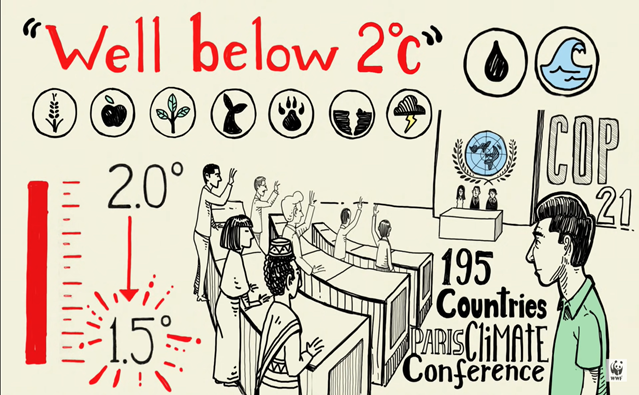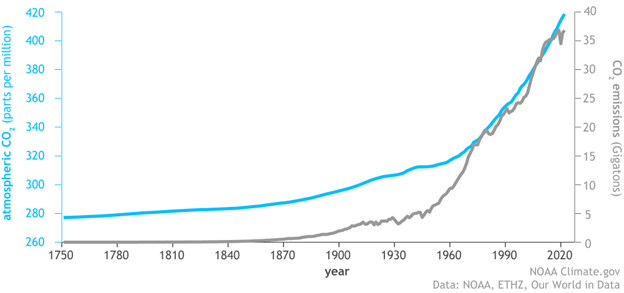Importance of Setting SBTs
Kumru Rende, PhD
1/16/20243 min read


Importance of Setting SBTs
Kumru Rende, PhD
Carbon and Sustainability Consultant | CDP Expert, SBTi Lead, Net-Zero Coach
January 16, 2024
Reducing the carbon dioxide in the atmosphere and achieving net-zero targets is currently one of the most important issues, as climate change shows its harmful effects in different parts of the world and CO2 concentration continues to increase.
At Mauna Loa Observatory in Hawaii, where the modern carbon dioxide record began in 1958, the annual average carbon dioxide in 2022 was 418.56, a huge increase compared to the average value of preindustrial times (280 ± 10 ppm) (Figure 1). The concentration of CO2 in the atmosphere is measured as 420.9 ppm on January 14th (GGRN, 2024).
Figure 1. Global atmospheric carbon dioxide compared to annual emissions (1751-2022).
Nearly 200 countries participated in the twenty-first UNFCCC Conference of the Parties and signed the Paris Agreement to limit the increase in the global average temperature to well-below 2°C above pre-industrial levels and to pursue efforts to limit the temperature increase to 1.5 °C (United Nations Framework Convention on Climate Change (UNFCCC), 2015). They committed to a variety of steps, including a significant reduction in GHG emissions. Since beyond a 1.5°C increase, the world will increasingly experience extreme climate events and humanitarian crises such as drought, rising sea levels, floods, high-temperature increases, etc.
SBTi and Setting SBTs
The Science Based Targets Initiative (SBTi) is a global body enabling businesses and financial institutions to set ambitious emissions reduction targets in line with climate science. It is focused on accelerating companies across the world to halve emissions before 2030 and achieve net-zero emissions before 2050. The SBTi defines and promotes best practices in science-based target (SBT) setting, offers resources and guidance to reduce barriers to adoption, and independently assesses and approves companies’ targets.
Companies can contribute to combating climate change by setting greenhouse gas (GHG) emissions reduction targets that are in line with reduction strategies for limiting global temperature rise to 1.5°C or well-below 2°C compared to pre-industrial temperatures. These targets are termed science-based targets (SBTs).
SBTs offer many strategic advantages in the transition to the low-carbon economy in Table 1 below (Science Based Targets Initiative (SBTi, 2020):
However, to ensure their rigour and credibility, SBTs should meet a range of criteria (Science Based Targets Initiative (SBTi, 2020). The most important ones are summarized below:
The boundaries of a company’s SBT should align with those of its GHG inventory.
The emissions reductions from Scope 1 and 2 sources should be in line with well-below 2°C or 1.5°C decarbonization pathways.
SBTs should cover at least 95 percent of company-wide Scope 1 and 2 emissions.
If a company has significant scope 3 emissions (over 40% of total Scope 1, 2 and 3 emissions), it should set a scope 3 target.
Scope 3 targets should be ambitious and measurable and also demonstrate how a company is addressing the main sources of value chain GHG emissions.
The Scope 3 target boundary should include the majority of value chain emissions, for example, 2 the top three emissions source categories or two-thirds of total Scope 3 emissions.
Offsets and avoided emissions should not count toward SBTs.
The step-by-step process of setting SBTs is given in Figure 2.
Figure 2. Five steps on setting the SBTs
References
GGRN. (2024). Greenhouse Gas Reference Network Estimated Global Daily CO2. https://gml.noaa.gov/ccgg/
Science Based Targets Initiative (SBTi). (2020). Science-Based Target Setting Manual.
United Nations Framework Convention on Climate Change (UNFCCC). (2015). Paris Agreement.
You can find detailed information via the links below:
https://sciencebasedtargets.org/
https://sciencebasedtargets.org/resources/files/SBTi-Corporate-Manual.pdf
#sustainability #climateaction #sciencebasedtargets #GHGProtocol #netzero






Sustainability
Innovative solutions for reducing carbon emissions.
NZT Consultancy
info@nztconsultancy.com
© 2025. All rights reserved.
